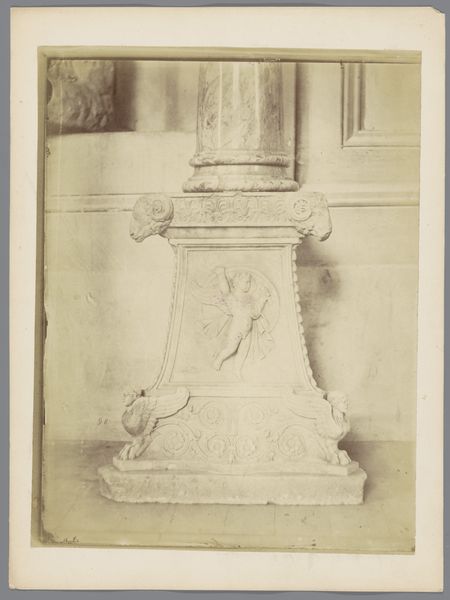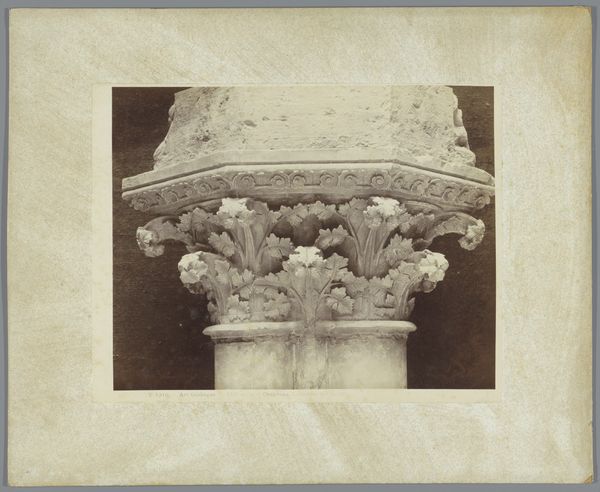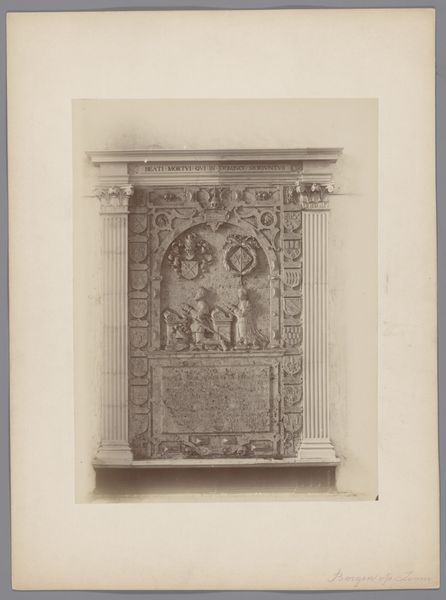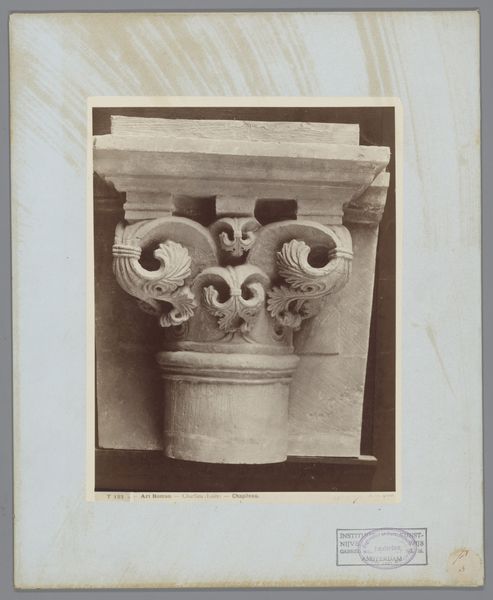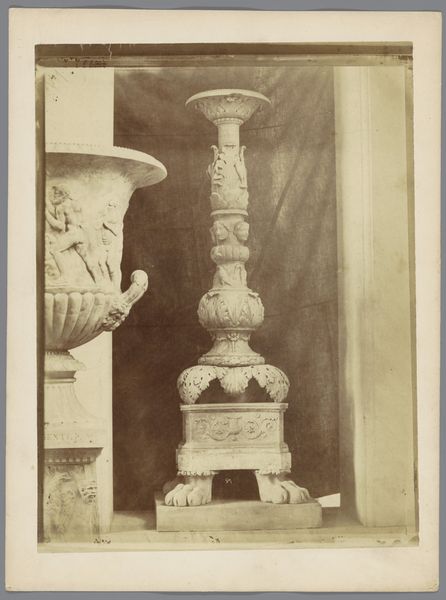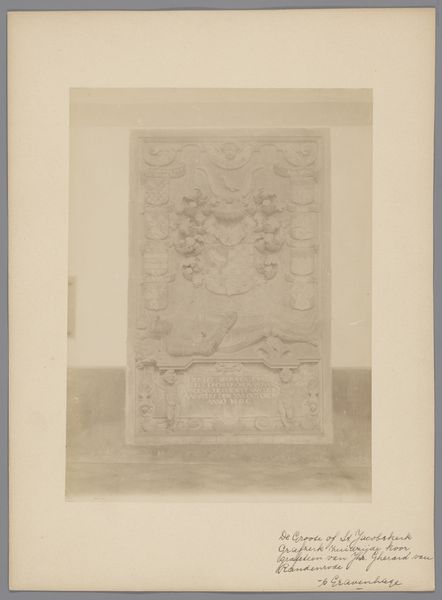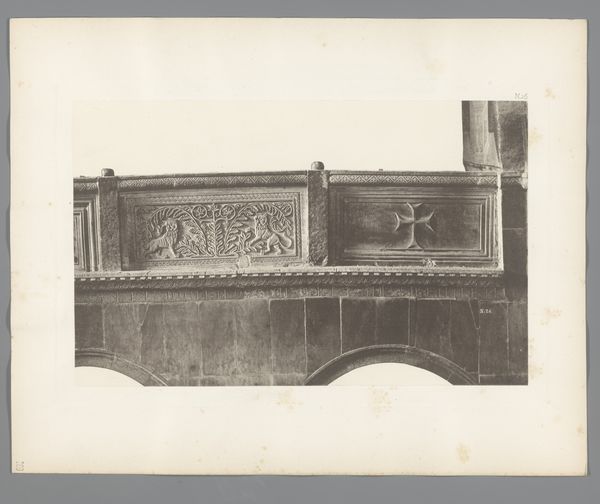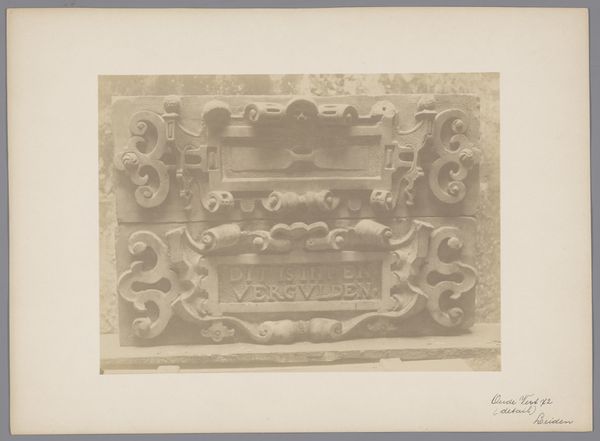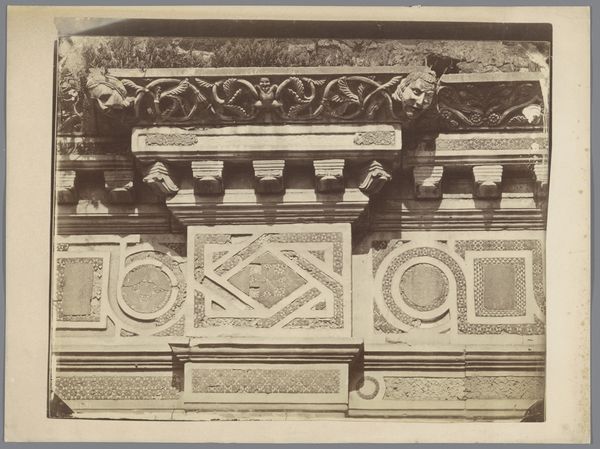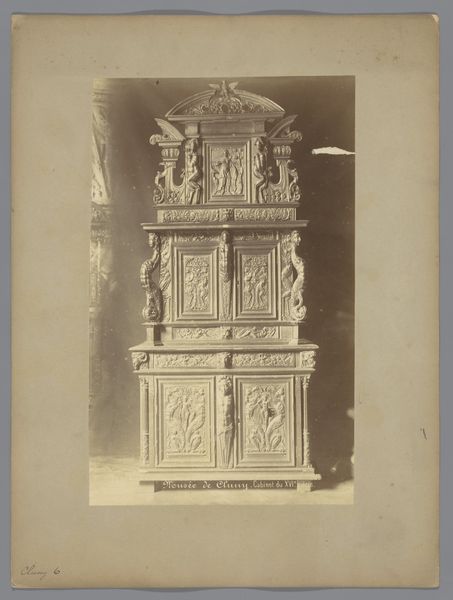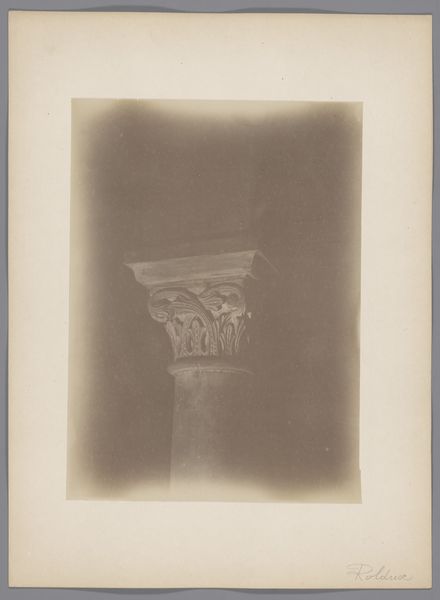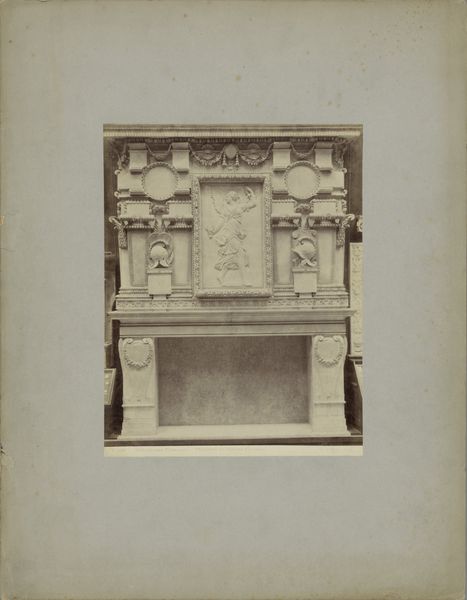
relief, photography, sculpture
#
portrait
#
aged paper
#
toned paper
#
relief
#
classical-realism
#
photography
#
coloured pencil
#
geometric
#
sculpture
Dimensions: height 278 mm, width 208 mm
Copyright: Rijks Museum: Open Domain
This relief of a cherub was created by Gustave Eugène Chauffourier, a French artist who lived through a period of significant social and political change, including the Franco-Prussian War and the rise of the Third Republic. The cherub, a symbol often associated with innocence and divine love, is presented here within a classical framework, reflecting the era's interest in Neoclassicism. However, this artwork also speaks to the complex ways in which innocence has been idealized and sometimes exploited across histories. The cherub, while seemingly pure, exists within a structure that may carry other social or religious implications. Consider how such symbols are used, and perhaps sometimes misused, to evoke certain emotions or justify particular ideologies. As you view the artwork, consider how symbols shape our understanding and emotional responses to broader cultural narratives. Does this image challenge or reinforce conventional ideas about innocence, divinity, and power?
Comments
No comments
Be the first to comment and join the conversation on the ultimate creative platform.
